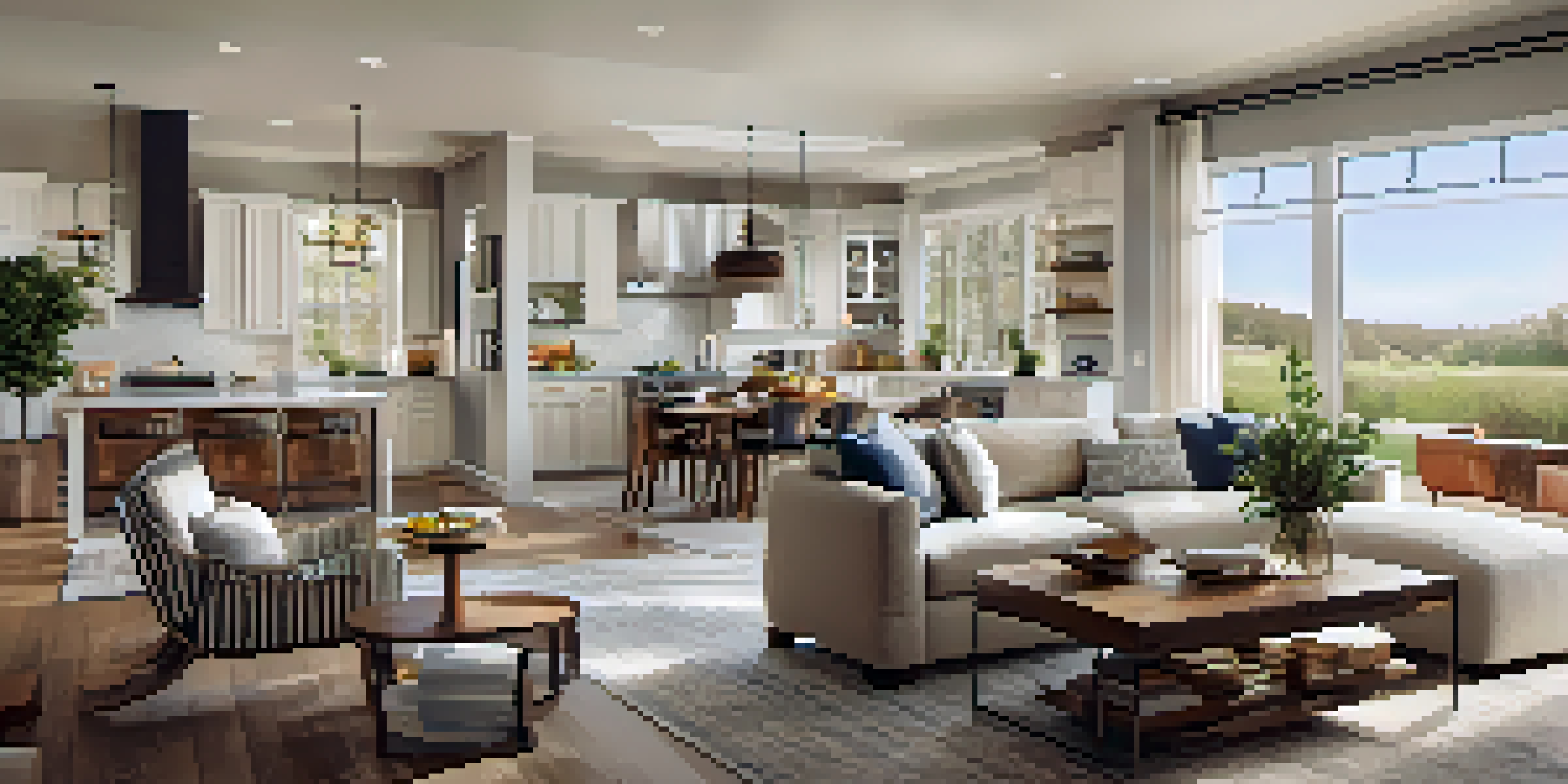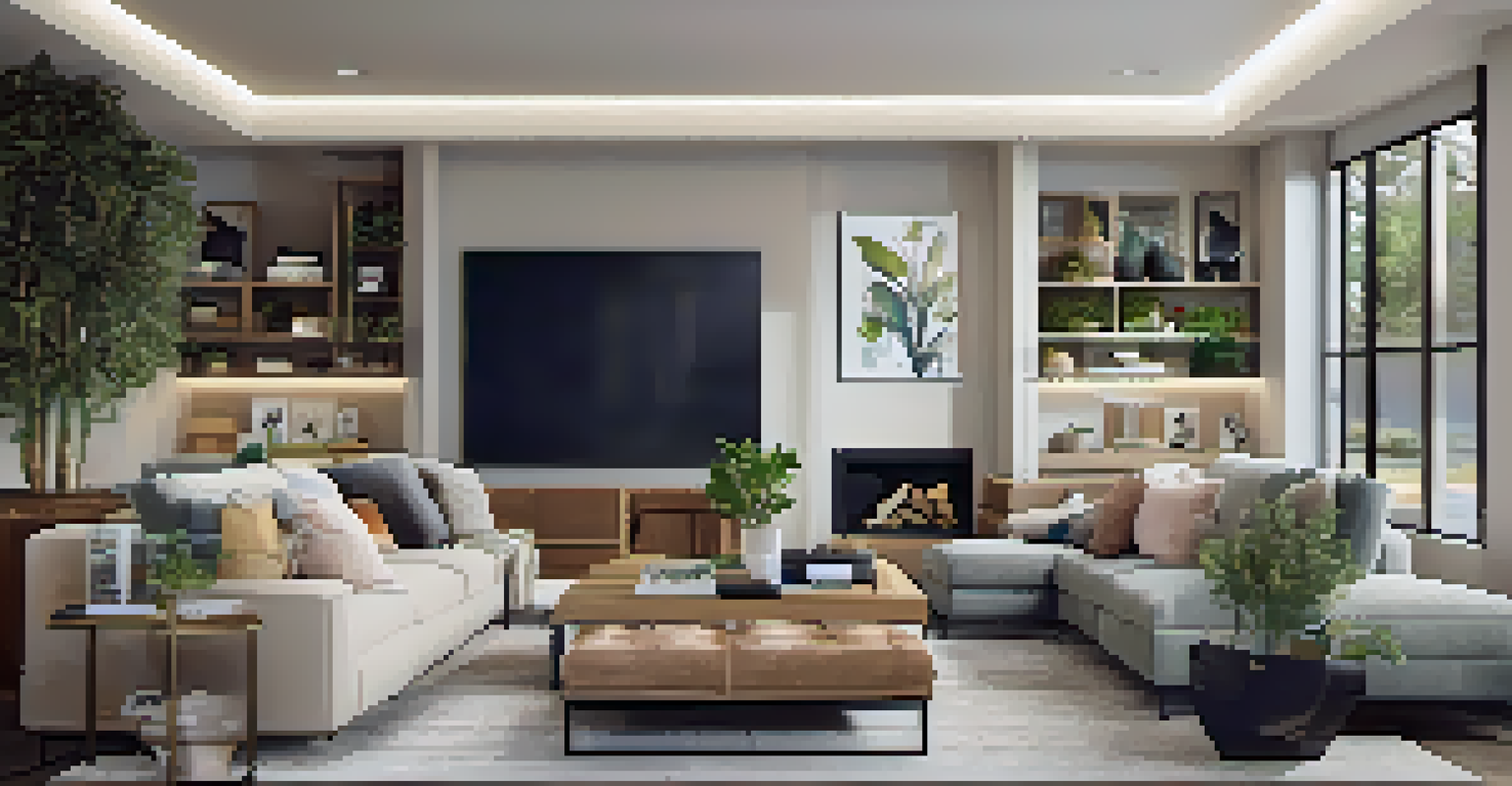Open Concept Living: A Hub for Family Activities

Understanding Open Concept Living Spaces
Open concept living is a design style that merges multiple areas into one large, unified space. Typically, this includes the kitchen, dining, and living room, which encourages interaction among family members. By removing walls and barriers, this layout creates a fluid environment that feels both spacious and inviting.
The best thing about a home is that it feels good to leave, and it feels even better to come back.
This design trend has gained popularity for its ability to facilitate communication and connection. Families can cook, eat, and socialize without feeling isolated in separate rooms. This layout not only enhances aesthetic appeal but also promotes a more dynamic lifestyle.
Imagine hosting a family gathering where everyone is engaged, whether cooking in the kitchen or lounging on the couch. Open concept living turns home into a social hub, making it easier for loved ones to share experiences and create lasting memories together.
Promoting Family Interaction and Bonding
One of the greatest advantages of open concept living is the natural flow it encourages among family members. With fewer physical barriers, conversations can easily extend from the kitchen to the living room, fostering a sense of togetherness. This layout empowers families to engage in shared activities and discussions, enhancing their emotional connections.

For example, while one family member prepares dinner, others can set the table or help with meal prep, all while chatting and laughing. This collaborative atmosphere not only makes chores feel lighter but also strengthens relationships. It’s in these shared moments that families deepen their bonds.
Fosters Family Interaction
Open concept living encourages communication and bonding among family members by removing barriers and creating a unified space.
Plus, open spaces can accommodate a variety of activities, from game nights to movie marathons, making it easy for families to spend quality time together. The more time spent interacting in a communal space, the more memories are created.
Flexibility in Designing Family Activities
An open concept layout offers incredible flexibility, allowing families to adapt their spaces for different activities. Need to host a birthday party? Clear out the furniture and create a dance floor. Want to enjoy family movie night? Gather everyone around the couch with popcorn in hand. The possibilities are endless!
Home is not a place, it's a feeling.
This adaptability also means that family members can pursue their interests within the same space. A child can work on a craft project at the dining table while a parent cooks dinner nearby. This simultaneous activity fosters a sense of togetherness without sacrificing individual passions.
Moreover, the open design can be easily transformed with furniture arrangements or decorative elements, ensuring the space feels fresh and exciting for each family gathering. It’s about creating an environment that encourages everyone to be involved and engaged.
Creating a Cozy Atmosphere with Design
While open concept living is functional, it’s also essential to create a cozy atmosphere that feels inviting. Layering textures with rugs, cushions, and throws can add warmth to the space. Incorporating personal touches, like family photos or artwork, can also make the area feel more intimate and special.
Lighting plays a crucial role as well; using a mix of ambient, task, and accent lighting can help define different areas within the open space. For example, pendant lights above the kitchen island can create a focal point, while soft lighting in the living area can encourage relaxation.
Flexible for Various Activities
The adaptable layout of open concept spaces allows families to easily transform their environment for different gatherings and activities.
Ultimately, the goal is to craft a space that feels like home, where family members can unwind and connect. A cozy, well-designed open concept space not only looks beautiful but also enhances the quality of family time.
Encouraging Kids' Independence and Creativity
Open concept living is not just for adults; it also encourages children to explore their independence. With a visible layout, parents can easily keep an eye on their kids while they play or work on projects nearby. This visibility fosters a sense of security for both parents and children.
Moreover, the freedom of movement in an open space allows kids to express their creativity. They can easily transition from building a fort in the living room to doing arts and crafts at the dining table. This fluidity inspires imaginative play without the constraints of closed-off rooms.
By promoting independence, children learn to engage with their environment more actively, enhancing their problem-solving skills and creativity. Open concept living encourages a balance between supervision and autonomy, which is essential in a family setting.
Hosting Gatherings Made Easy
When it comes to hosting gatherings, open concept living spaces shine. With ample room for guests to mingle, families can invite friends and relatives over without worrying about cramped quarters. The interconnected layout encourages movement and conversation, making socializing feel effortless.
Additionally, an open design allows for seamless transitions between different activities. Guests can grab snacks from the kitchen while participating in a game in the living area. This flow keeps the atmosphere lively and engaging, ensuring everyone has a good time.
Encourages Kids' Independence
This design supports children's independence and creativity, as parents can supervise their activities while kids freely explore their interests.
Whether it’s a birthday party or a casual get-together, open concept living makes hosting enjoyable and stress-free. Families can focus on connecting with their guests rather than managing space constraints.
Maintaining an Organized Space in Open Living
One challenge of open concept living is keeping the space organized and tidy. Without walls to contain clutter, it’s essential to establish effective storage solutions. Incorporating multifunctional furniture, like ottomans with hidden storage or coffee tables with shelves, can help keep items out of sight while remaining accessible.
Regular decluttering is vital as well. Setting aside time weekly to tidy up can make a significant difference in maintaining order. Encouraging each family member to have a designated spot for their belongings can also prevent chaos from taking over the space.

Ultimately, an organized open concept living area enhances its functionality and aesthetic appeal. A clean and orderly environment allows families to focus on enjoying their time together without the distraction of clutter.